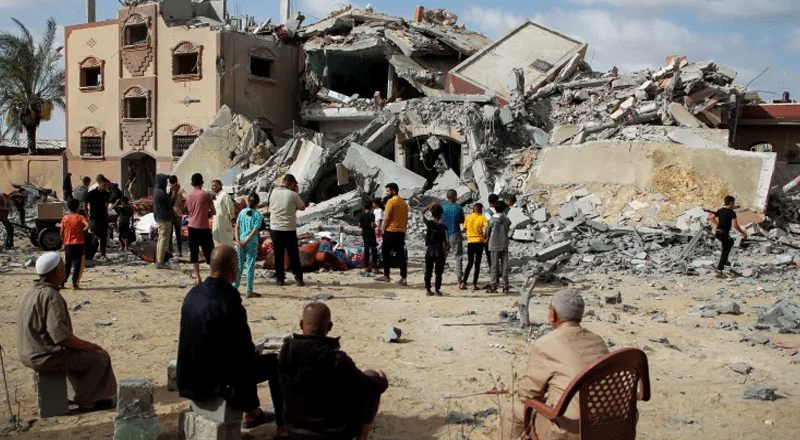Political Shifts and Economic Struggles
As Sri Lanka grapples with the aftermath of a severe economic crisis, citizens now face a crucial general election that could shape the nation’s future. On Thursday, millions of Sri Lankans turned out to vote in a snap election initiated by President Anura Kumara Dissanayake. Elected in September 2024, Dissanayake, a left-leaning leader, dissolved the parliament to seek greater legislative backing for his coalition, the National People’s Power (NPP), aiming to deliver reforms critical to Sri Lanka’s economic revival and social stability. With over 17 million eligible voters and nearly 700 parties vying for representation in the 225-seat parliament, the election highlights a pivotal moment in Sri Lanka’s political landscape.
A New Leadership and Fresh Legislative Aspirations
President Dissanayake’s rise marked a departure from the dynastic politics long dominant in Sri Lanka. The Marxist-leaning leader has pledged to tackle poverty and boost welfare, rallying support for policies intended to ease the financial burden on the nation’s poorest citizens. Despite his recent election, his coalition holds only three seats in the current parliament, prompting the snap election to secure a legislative majority. This expanded power would allow him to fulfill campaign promises, enact tax reforms, and reduce the nation’s reliance on foreign debt.
In a country known for its tradition of supporting sitting presidents, this election is critical for Dissanayake to strengthen his coalition and avoid a potential legislative gridlock with opposing parties.
Election Landscape and Key Contenders
Two primary parties challenge Dissanayake’s NPP in the election: the Samagi Jana Balawegaya (SJB), led by opposition leader Sajith Premadasa, and the New Democratic Front (NDF), supported by former president Ranil Wickremesinghe. Premadasa’s SJB presents a mixed economic approach, incorporating both state-led and free-market strategies to appeal to a broad range of voters. Wickremesinghe’s NDF, representing a more conservative viewpoint, has significant backing from established political elites. Each contender offers differing policies on economic recovery and governance, creating a diverse but sharply competitive electoral landscape.
In total, 8,821 candidates are competing for 196 seats, with another 29 “national list” seats distributed proportionally to parties based on the overall vote.
Economic Recovery at the Forefront
The economic recovery is central to voter concerns, as Sri Lanka faces the lingering effects of a severe financial crisis. The nation’s economy contracted by 7.3% in 2022, and although the International Monetary Fund (IMF) provided a $2.9 billion bailout, economic recovery has been slow. Inflation and a high cost of living continue to affect the daily lives of citizens, particularly among the working class and rural populations.
Dissanayake has shown a desire to modify IMF terms, prioritizing welfare spending to aid those hardest hits by the crisis. However, his stance has raised concerns among investors, who fear adjustments could jeopardize the IMF’s targets, such as achieving a primary surplus of 2.3% of GDP by 2025. While Sri Lanka’s financial markets have seen some stability since the presidential election, with both stock and bond prices rallying, any changes to the IMF agreement could shift investor sentiment and impact the island’s recovery.
Security and Voter Turnout
Voting took place smoothly on Thursday, with over 13,400 polling stations set up across 22 districts. Police forces, backed by the military, were stationed nationwide to ensure a safe and orderly election process. The presence of security personnel reflects the government’s commitment to a transparent and fair election, crucial for sustaining public trust in Sri Lanka’s democratic institutions.
At polling stations, citizens expressed cautious optimism. Voter Umeshi Perera, 32, stated, “I think we are seeing the first signs of a positive political change in Sri Lanka after the president was elected, and we should give him the chance to continue that change.”
The Stakes for Parliamentary Control
A parliamentary majority would grant Dissanayake the power to implement a cabinet without forming a coalition, giving him the latitude to pursue his agenda independently. However, if his coalition fails to secure sufficient seats, Sri Lanka could face a policy impasse, complicating the path to recovery. Analyst Bhavani Fonseka from the Centre for Policy Alternatives in Colombo emphasized, “This election is critical as it is a test for the NPP to get the numbers needed for the IMF package and to take forward promised governance, constitutional, and economic reforms.”
The NPP’s ability to mobilize support has been strong among younger and left-leaning voters, though its relatively new candidates face tough competition from established politicians within the traditional parties. As the results unfold, the implications for both governance and economic strategy will become clearer.
A Turning Point for Sri Lanka’s Future
Sri Lanka’s snap election represents a decisive moment for both the government and its citizens. As President Dissanayake seeks a mandate to drive meaningful reform and economic recovery, the election outcome will signal the direction of Sri Lanka’s political and economic future. Whether voters grant Dissanayake the parliamentary strength he seeks or place power with the opposition, the result will shape the next phase of Sri Lanka’s journey out of financial crisis. The Election Commission is expected to release the results on Friday, offering a glimpse into how Sri Lanka’s 22 million citizens envision their country’s recovery and future stability.
(With inputs from agencies)





